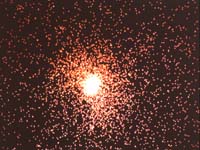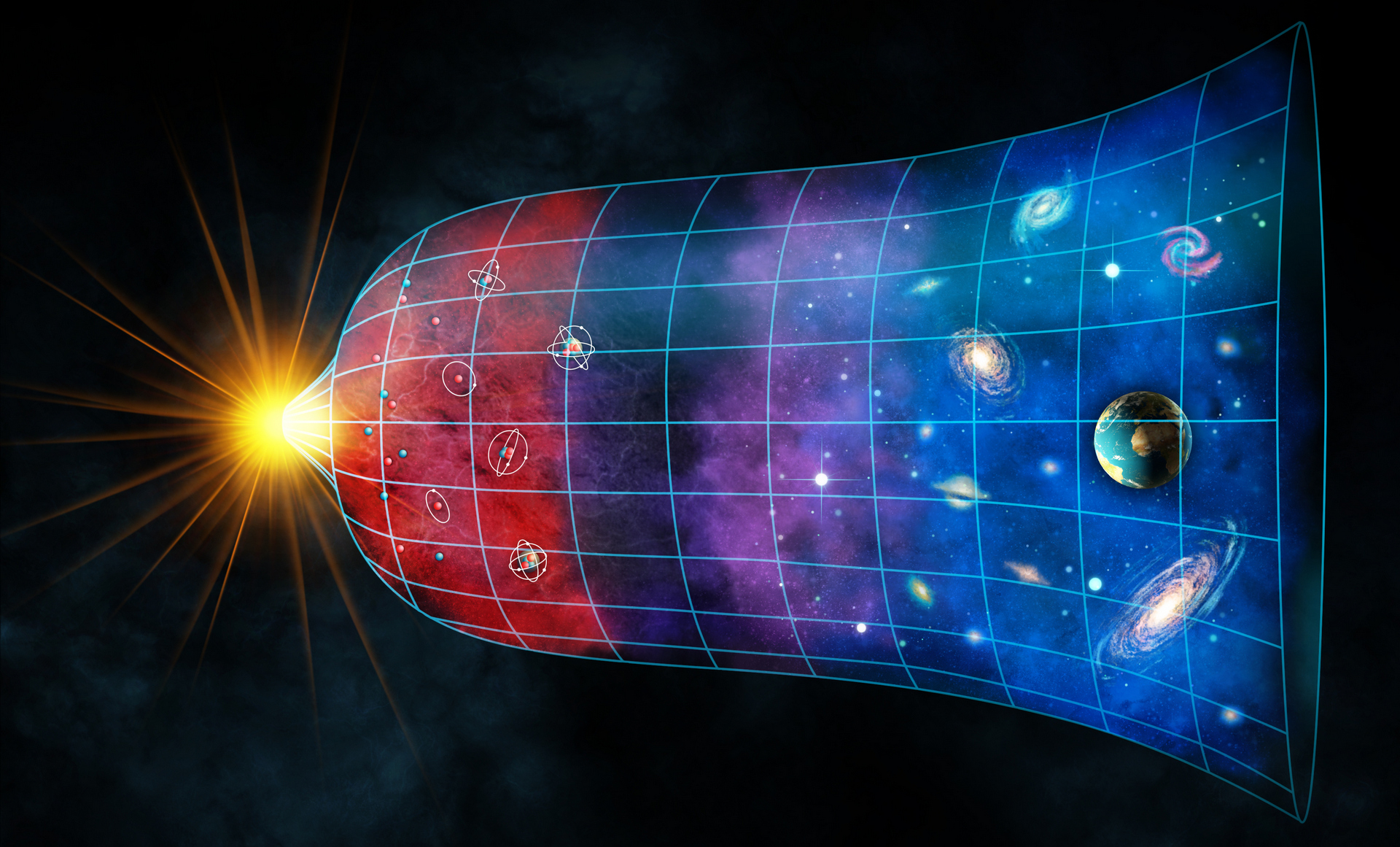Was there a “Big Bang”?

The big bang is usually defined as a random, chance event. Some instability supposedly developed in an original “kernel” of mass energy, and the universe then ballooned outward. However, Scripture clearly rules out such an accidental origin. A modified view of the big bang theory says that when the explosive event happened, it was directed by God. This is called theistic evolution and is an attempt to compromise the Bible with long-age evolutionary theories. It is rejected by many creationists because of its conflict with the order of events in Genesis. The following chart contrasts some of the chronological discrepancies between the Bible’s creation account and the big bang theory.
| Scripture | Big Bang |
|---|---|
| All elements made together | Elements beyond hydrogen and helium formed after millions of years |
| Earth formed before stars | Earth formed long after the stars |
| Plants formed before the sun | Plants evolved after the sun |
| Birds created before reptiles, mammals | Birds evolved from reptiles |
| Sun formed on the fourth day, after the Earth | Sun formed before the Earth |
| Sun, moon, and stars formed together | Sun formed from older stars |
Creationists maintain that in the beginning God spoke and the Earth appeared--he commanded and the heavens stood firm (Ps. 33:9)! All the many stars appeared suddenly and supernaturally in space. Scripture does not imply an explosion, although the universe must have experienced a sudden, “explosive” input of ordered energy. Perhaps some astronomical data that seems supportive of the big bang theory, such as redshift and background radiation, needs to be looked at instead as evidence of a rapid creation. Once secular variation of the big bang theory refers to an “inflationary” big bang, the suggestion being that the universe developed and matured very quickly in its first moments. In this particular theory, secular science seems to have taken one step in the creationist direction. Further developments should be of interest in this area of theory and research.
The big bang as it is understood today is an inadequate theory. There are many fundamental problems that are seldom mentioned in popular literature. Some of the “missing links” in the theory are:
Missing Origin: The big bang theory assumes an original concentration of energy. Where did this energy come from? Astronomers sometimes speak of an origin from a “quantum mechanical fluctuation within a vacuum.” However, in the big bang theory, no vacuum existed before the explosion. Actually there is no consistent secular origin theory, since every idea is based on preexisting matter or energy.
Missing Fuse: What ignited the big bang? The mass concentration proposed in this theory would remain forever bound as a universal black hole. Gravity would prevent it from ever expanding outward.
Missing Star Formation: No natural way has been found to explain the formation of planets, stars, and galaxies. An explosion should produce, at best, an outward spray of gas and radiation. This gas should continue expanding, not form intricate planets, stars, and entire galaxies.
Missing Antimatter: Some versions of the big bang theory require the equal production of matter and antimatter. However, only small traces of antimatter-positrons and antiprotons, for example-are found in space.
-
Missing Time: Some experiments indicate that the universe may be young, on the order of 10,000 years old. If true, then there is not sufficient time for the consequences of the big bang theory to unfold. A short time span will not allow for the gradual evolution of the stars or life on Earth.
-

Missing Mass: Many scientists assume that the universe will eventually stop expanding and begin to collapse inward. Then it will again explode and repeat its oscillating type of perpetual motion. This idea is an effort to avoid an origin and destiny for the universe. For oscillation to occur, however, the universe must have a certain density or distribution of mass. So far, measurements of the mass density are 100 times smaller than expected. In fact there are indications that the universe is accelerating outward instead of slowing down. The universe does not appear to be oscillating. The necessary mass or “dark matter” is “missing.”
-
Missing Life: In an evolving universe, life should have developed everywhere. Space should be filled with radio signals from intelligent life forms. Where is everybody?
-
Missing Neutrinos: These small particles should flood the Earth from the sun’s fusion process. The small number detected raises questions about the sun’s energy source and man’s overall understanding of the universe. How then can science speak about “origins” with any authority?
Author: Dr. Donald B. DeYoung - adapted from Astronomy and the Bible: Questions and Answers, 2nd Edition (Grand Rapids, Michigan: Baker Books, 2000), 176 pp.
Related issues
ORDER OF CREATION—What is the order of events in the biblical Creation? Answer
24-HOUR DAYS IN HEBREW?—Does the Hebrew text really refer to 24-hour periods in the Creation week? Answer
Was the fourth day of Creation twenty-four hours long? Answer
6th Day of Creation: 24 Hours? Could all of the events recorded on the 6th day of creation really have taken place during a normal, 24-hour-type day? Answer
AGE OF THE EARTH CLEAR?—Is the Bible clear about the age of the Earth and universe? Answer
TRIVIAL OR VITAL?—Is the age of the Earth a trivial doctrinal point for Bible-believing followers of Christ? Answer
Copyright © 2000, Films for Christ, All Rights Reserved—except as noted on attached “Usage and Copyright” page that grants ChristianAnswers.Net users generous rights for putting this page to work in their homes, personal witnessing, churches and schools.
